First Drive: The 2025 Rolls-Royce Black Badge Spectre Is The Sportiest Rolls Ever
“So, left foot hard on the brake, right foot on the accelerator, and sidestep the brake to launch?”
“Yup, simple as that.”
I’m in Spain, lined up on the back straight at the Parcmotor Castellolí circuit just outside Barcelona. Atop the long hood that stretches ahead sits the Spirit of Ecstasy, finished in darkened chrome, a first for the Spectre. Beyond it lies 625 meters (2,051 feet) of perfectly straight track on which this 659-horsepower Black Badge will burst off the line, blast past 100 mph, and slow all of its 6,371 pounds ahead of the sweeping left-hander that follows.
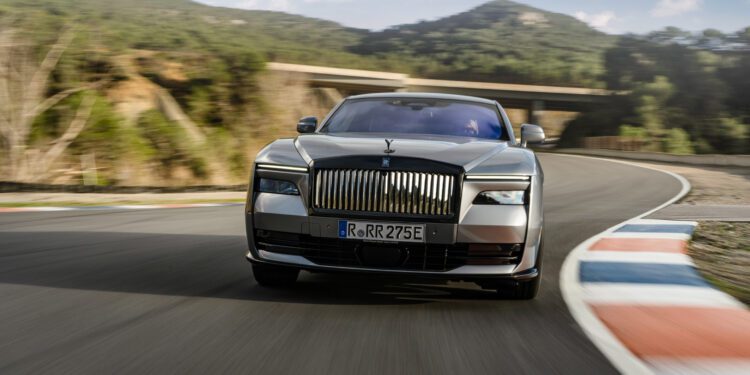
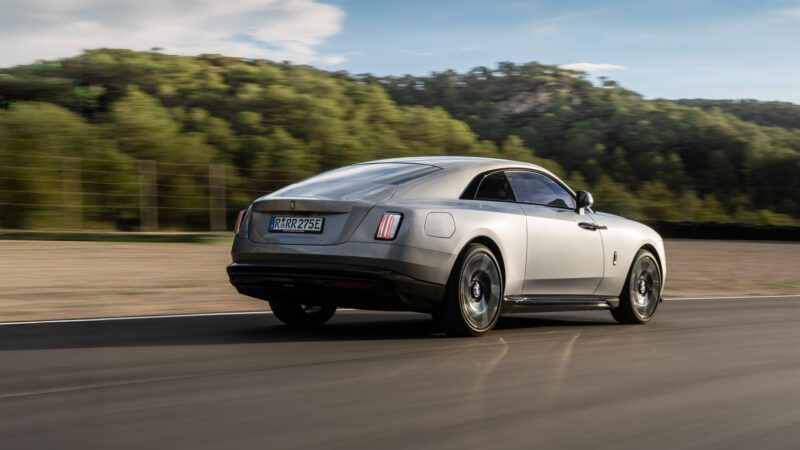
Debuting a Rolls-Royce on a racetrack is a bold move, but it’s clear that the British brand is out to make a statement. While this latest Spectre employs a familiar Black Badge formula, it seeks to take things further with a substantial 82-hp power increase and chassis upgrades to help it better deploy its newfound performance. The Black Badge Spectre isn’t just the most powerful Rolls-Royce ever; it wants to be the sportiest, too.
At first glance, a sporty Rolls-Royce reads like the answer to a question no one asked. Yet, by granting the carmaker access to their anonymous driving data, Black Badge owners did, in fact, ask. According to Rolls-Royce, the stats show that BB owners leap from a standstill with more substantial accelerator inputs than average. Its engineers observed this trend over hundreds of thousands of miles collected, leading the team developing the new Spectre to a simple conclusion: the Black Badge customer doesn’t just want more power; they want to use it too.
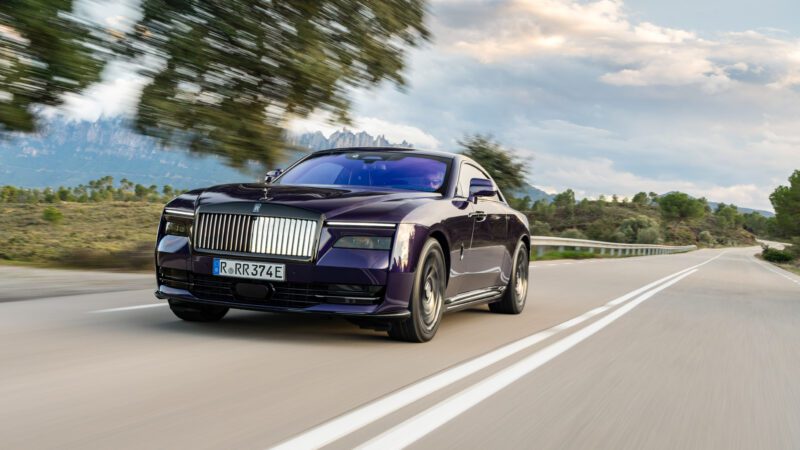
This discovery served as the catalyst for creating Rolls-Royce’s take on a dedicated Sport mode. While previous BB models featured the subtle Low setting, which quickened shifts and throttle response, the Black Badge Spectre’s new Infinity Mode takes things much further by re-tuning more of this car’s hardware.
For starters, it’s the only way to unleash this coupe’s full 659 hp and 792 pound-feet of torque output, which is otherwise 584 hp and 664 lb-ft. It simultaneously unlocks the ability to engage “Spirited Mode,” the brand’s take on a launch control system. Combined with the electric powertrain’s instant power delivery, this 6,371-lb ultra-lux coupe sprints to 60 mph in a staggering 4.1 seconds, or about as quick as a base Porsche 911 Carrera (3.9 seconds.)
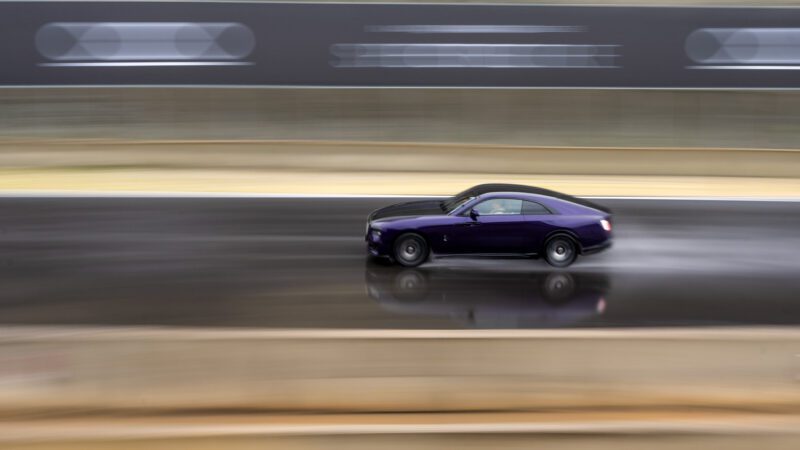
Back on the track, a small banner appears on the Spectre’s digital cluster, confirming that Spirited Mode is ready. I sidestep the brake pedal while my right foot is pinned to the floor, taking off as rain falls on the track ahead. Its nose rises as the all-wheel drive Black Badge Spectre effortlessly puts its power down in the wet. Thanks to its revised dampers, the back end doesn’t squat nearly as much as it does on other Black Badge models. Its tires don’t struggle, nor does any traction control warning appear on the dash; it simply takes off.
As you’d expect from a two-door making 792 lb-ft, my pro driver passenger and I are pinned to our seats the second it gets off the line. Yet, even as the numbers on the Spectre’s central speedometer rocket upwards, the vibe inside the cabin remains perfectly serene. We blast past the pits just as we crest 100 mph, but there’s no wind noise to spoil the moment; only Rolls-Royce’s digital acceleration sound underscores the run, and even then, it’s a subtle song.
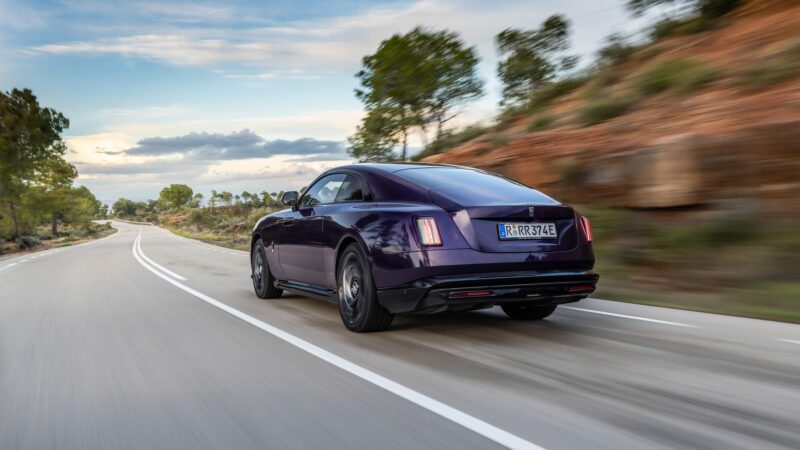
The Black Badge Spectre’s magic lies in how well it introduces this layer of added performance without detracting from its core luxury tenants. It allows you to go toe-to-toe off the line with a proper sports car while getting a massage or listening to an audiobook. It’s effortless performance. The complete severance from the outside world so emblematic of a Rolls-Royce remains, the only thing that changes is how quickly the world shuffles beneath your tires. This Spectre may have sporty aspirations, but it’s a Rolls-Royce first.
A point became apparent as I stomped hard on the left pedal ahead of the first sweeping bend. All 6,371 of the Spectre’s pounds are well accounted for as its brakes make a valiant effort to scrub speed. This coupe’s on-track capabilities remain obviously limited. Yet, the fact that my co-driver and I are giggling as we rocket out of the wet corner, leaving a vast mist cloud in our wake, illustrates what the Black Badge Spectre is best at: taking a Rolls-Royce experience and making it fun.
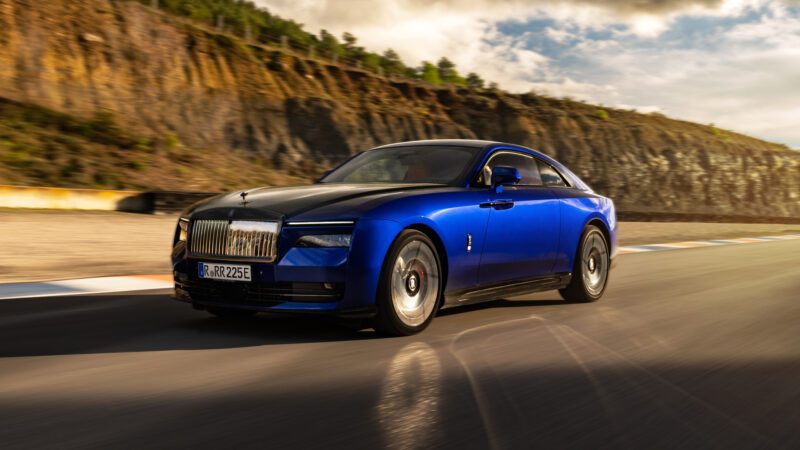
On the mountainous twisting back roads outside of Barcelona, the Rolls-Royce Black Badge Spectre comes into its own. Its revised dampers, improved anti-roll system, and recalibrated steering make it a more agile and enjoyable car to link these tight bends. It turns in slightly quicker, is more stable throughout, and, with Infinity Mode engaged, has the benefit of substantially improved acceleration delivered instantly.
Yet, as I discovered on track, none of its athletic gains come at the cost of the ultra-lux experience this car is known for. Its fully electric powertrain means there’s less noise to isolate. At the same time, its 102-kilowatt-hour battery pack doubles as a sound-deadening device, reducing how much outside noise enters the cabin in the first place. Like the standard Spectre that preceded it, the Black Badge remains the quietest car I’ve ever driven. A V12-powered Rolls gets 99 percent of the way there, but the brand’s first EV remains unmatched.
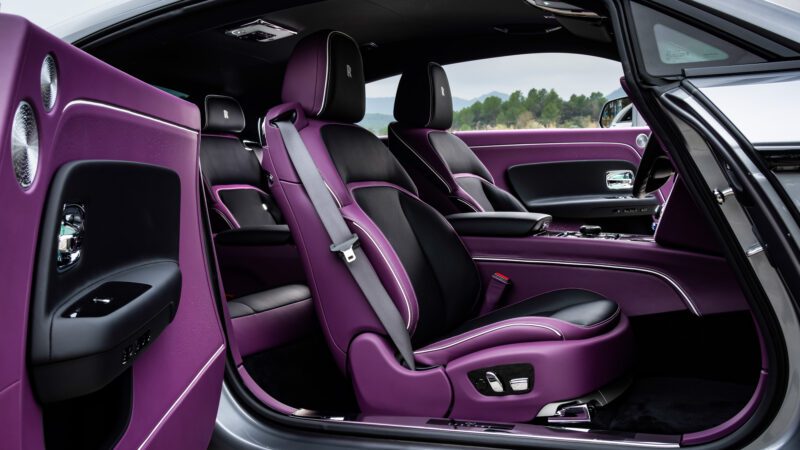
Beneath the skin, the Black Badge Spectre doesn’t introduce significant hardware changes. Its dual electric motor setup, one for each axle, allows it to send power to all four wheels. Fitted with a smaller set of 22-inch wheels, the Black Badge has an EPA estimated range of 266 miles, down from 291 miles in the standard model. Step up to the 23-in-wheel option, and that figure drops to 251. However, these estimates are pretty conservative as I discovered road-tripping an early pre-production Spectre from Las Vegas to Los Angeles on a single charge.
If we step back and examine the broader EV space, the Black Badge’s best-case-scenario range of 266 miles isn’t revolutionary. However, Rolls-Royce and its people will tell you that maximizing this figure isn’t a massive concern, as the average owner drives around 3,200 miles annually. Digging deeper into its research, the carmaker found that the Rolls-Royce buyer typically owns at least seven other vehicles, allowing the Spectre to be far more of a niche tool with no need to be an all-rounder.
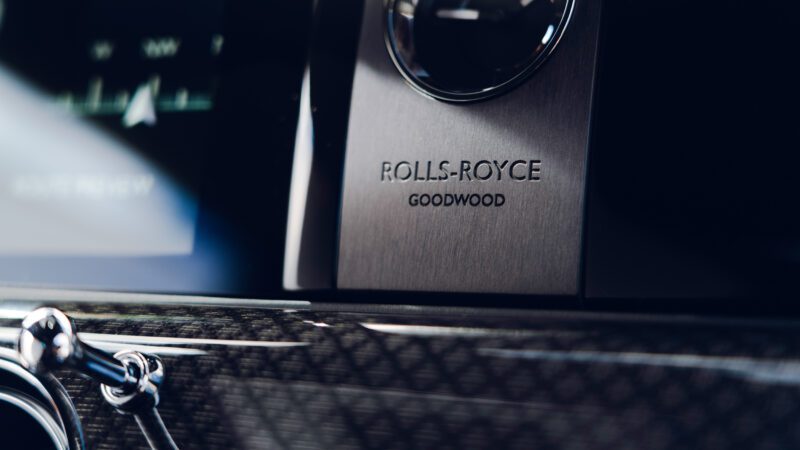
Step inside its opulent cabin, and you’ll find ample evidence of where the electrons from its pack actually go. Like the standard model, the Rolls-Royce Black Badge Spectre’s interior offers the Starlight headliner and the illuminated perforated door panels introduced for this EV. However, it adds an illuminated dashboard with the Black Badge Infinity logo and a model-specific Technical Fiber material. Blending an exposed carbon fiber weave and a metal thread, this unique trim piece takes a material known for its high strength and low weight and gives it a luxurious spin. It also doesn’t hurt that it sparkles like the rest of this car’s cabin.
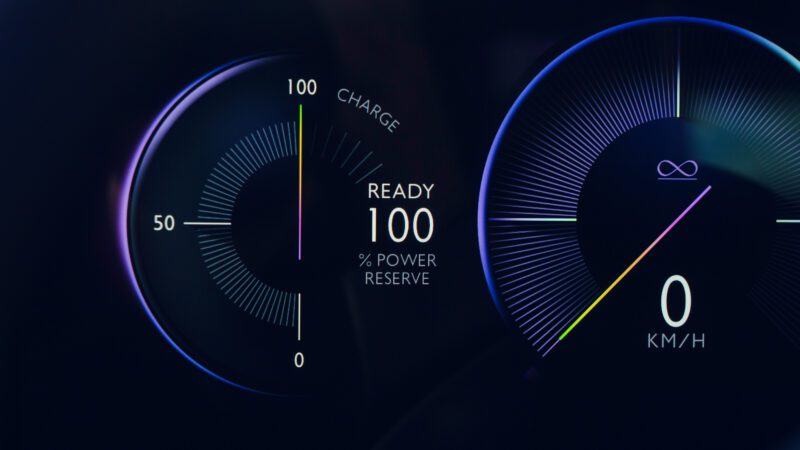
Alongside the increased performance, the Spectre lets you know you’ve engaged Infinity Mode when its digital speedometer illuminates a vibrant array of colors. This colorful drive setting pairs with five standard color themes, pre-selected to match the Black Badge’s interior tones. However, there are limitless options available through the marque’s Bespoke program.
On the exterior, the Rolls-Royce Black Badge Spectre continues the illuminated theme with a brighter backlit Pantheon Grille, offered in various new colors. An optional matte black hood joins the options list, as do trim-specific 23-inch wheels. Along the car’s sides, you’ll notice a secondary Waft line almost parallel to the well-known Rolls-Royce Coachline. Its meant to accent some of the Spectre’s subtler design elements, but mainly introduces an opportunity to create further visual contrast.
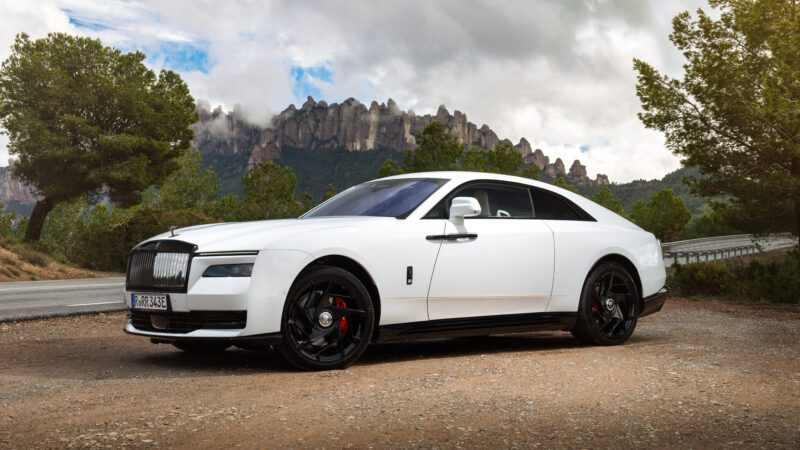
Yet long before I traveled to Barcelona to drive it, and even before Rolls-Royce unveiled it, the Black Badge Spectre was already on the road in the US. In what has to be an industry first, the British carmaker delivered cars to its top customers starting last fall, these buyers swearing to secrecy in exchange for early access. This allowed the carmaker access to early feedback while creating the opportunity to make further revisions ahead of its global debut.
This close connection to its customers and the hundreds of thousands of miles of real-world data it collects allows Rolls-Royce to create a finely tailored product for its niche audience. Like the Black Badge models that came before it, the Spectre adopts a familiar strategy with a darkened aesthetic and a cabin adorned with unique materials. However, it takes things much further.
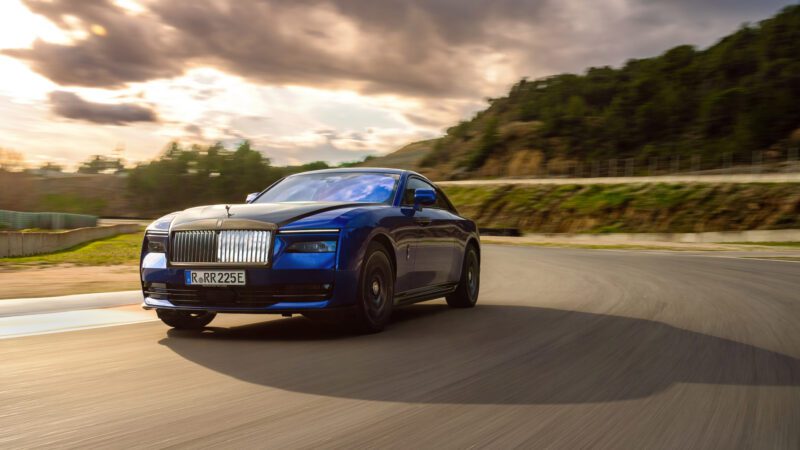
Starting at $465,000, the Rolls-Royce Black Badge Spectre introduces thoughtful revisions tailored to increase this car’s performance and behind-the-wheel engagement without ever detracting from the luxurious persona the marque is known for. With its improved handling and acceleration, the latest Spectre is the sportiest model the British marque makes, but true to the brand’s core values, it’s a Rolls-Royce first.
Tags: Featured
Review: The Mercedes-AMG S63 E Performance Gains an Electric Motor but Retains Its Soul
by Gabriel Vega
in Reviews
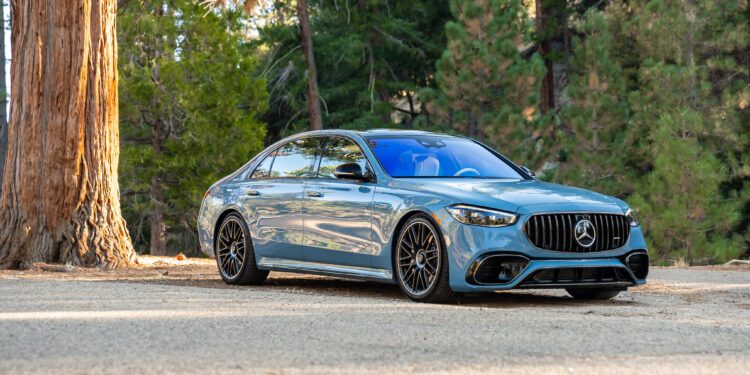
The S-Class remains as close as we’ll ever get to an all-seeing crystal ball. The general sentiment goes like this: if you want to know what the rest of the auto industry will look like in five to ten years, peek at what Mercedes-Benz’s flagship is up to now.
Yet, in today’s expansive luxury market, predicting the future has proven far from easy. Even as major players charged in unison to go fully electric, a recent slowing in demand for EVs has caused automakers big and small to reassess their plans. Bentley, for example, has opted to push back its goal of selling purely battery-powered cars by 2030 to 2035, while Aston Martin delayed the arrival of its first EV by four years to 2030 at the earliest.
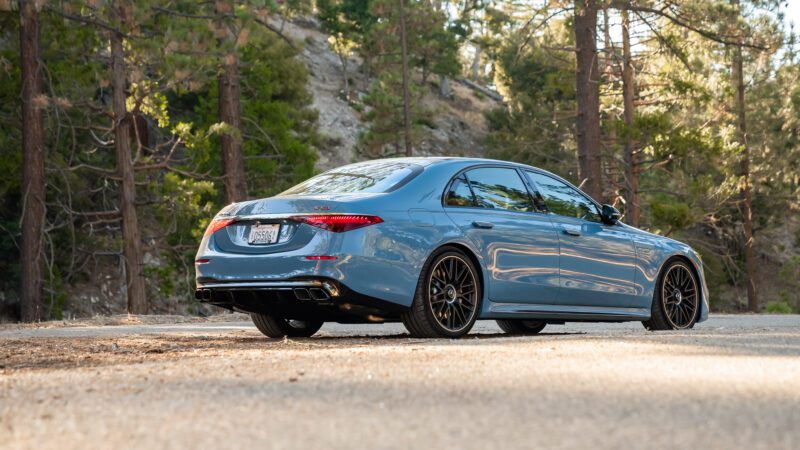
For now, plug-in hybrids seem like the right move for most brands and people, blending the benefits of silent, short-range electric travel and the long-range capabilities of an internal combustion engine. Although the S63’s development long preceded the slowing of EV sales by not going fully electric, the sportiest S-Class remains poised for success. Doubly so, as competitors now make the long pivot to adopt a similar powertrain formula.
In true Mercedes-AMG fashion, however, the S63 E Performance might be a hybrid, but by developing 791 horsepower and 1,055 pound-feet of torque, it’s also the most powerful S-Class ever. For those keeping score, that’s over 100 hp more than a McLaren F1, a Ferrari Enzo, or a Porsche Carrera GT. Still, with plenty of joyless high-power EVs on the market and examples of poorly electrified icons, spec-wise, AMG’s latest reads like a proper muscle-limousine, but does it still feel like an S63?
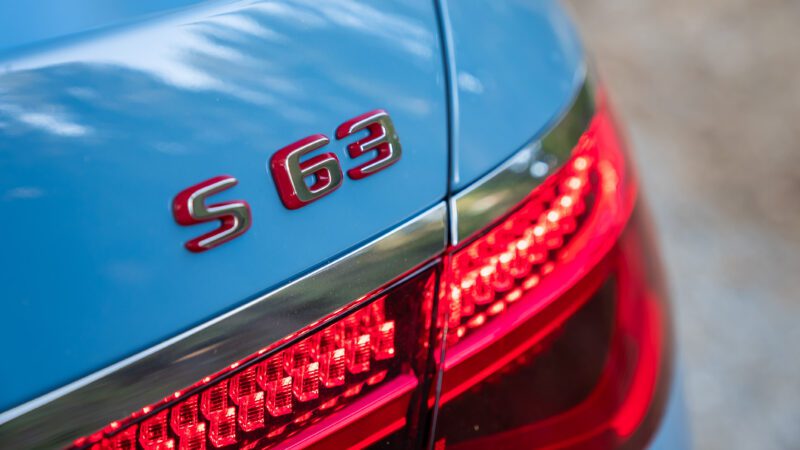
The long and short of it is yes, it does. The German marque has already taken big swings elsewhere; recall the four-cylinder C63 or the infamous F1-engined One. The S63 takes a far more conservative approach to its hybrid strategy, counting on hardware already loved by fans of the brand. Like its predecessor, a 4.0-liter twin-turbocharged V8 remains its core propulsion system, developing 604 hp and 664 lb-ft. Similarly, a nine-speed automatic sends power to all four wheels. So far, so conventional.
Focus your attention on its back axle and things become altogether less familiar. There, a drive unit houses a 94-hp electric motor (with a max output of 188 hp), an electronically controlled two-speed transmission, and a limited-slip differential. This second propulsion system works independently from the V8 up front, with this separation of church and state being intentional to allow both systems to deliver maximum performance without detracting from one another.
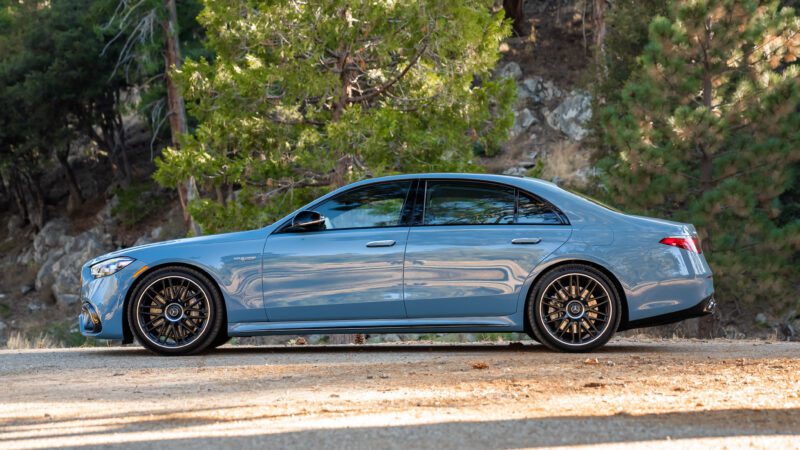
The complexity and weight this emissions-compliant setup introduces cannot be overstated. Drive it onto a set of scales, and Mercedes-AMG claims the resulting figure will read 5,831 pounds. That’s shy of 200 lb more than a current-gen Rolls-Royce Phantom (5,644 lb.) While it produces an extra 188 hp over the previous gas-only S63, the new car is only two-tenths quicker to 60 mph.
While the latest S63 sedan is the most powerful S-Class ever, it isn’t the quickest, with that title belonging to the discontinued S63 Coupe. Still, the sedan’s 3.3-second time is impressive, especially given how much it weighs. This luxury limousine still hits 60 mph as quickly as a Ferrari 458 Spider.
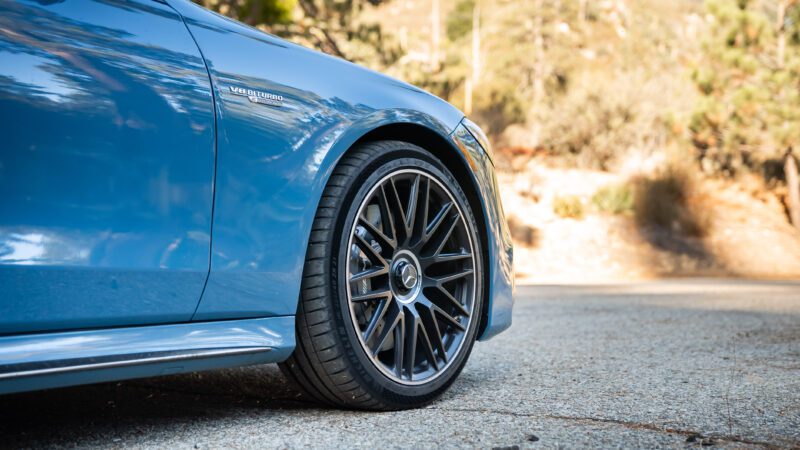
There are, of course, benefits introduced by a plug-in hybrid powertrain. Despite housing a tiny battery with just over ten kilowatt-hours of usable capacity, the S63 can cruise on electrons for up to 16 miles. As supercars like the Ferrari 296 GTB and the McLaren Artura demonstrate, this flexibility is valuable when a blaring cold start isn’t ideal. If you live across the pond, it also grants access to ultra-low-emission zones in some major cities.
Yet despite its complex powertrain, there’s never a moment when you feel like you’re driving anything other than a proper S63. There are constant reminders, like its exhaust, which spits out a proper burble at the request of your right foot, only to settle to silence while cruising. On the daily commute, its suspension, comprised of air springs and adaptive dampers, softens effortlessly. A two-valve setup separates rebound and compression damping, making this car stiffer in Sport+ and softer in Comfort than previous iterations.
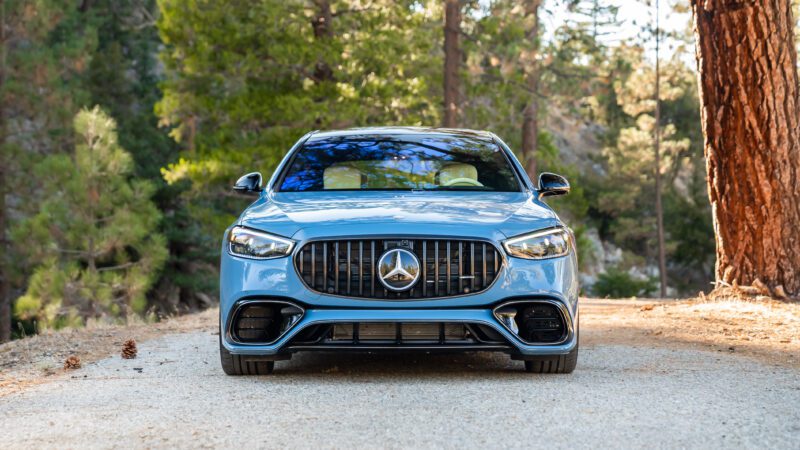
However, AMG could’ve gone firmer still. Especially when you factor in that Sport+ is the most hardcore of no less than seven driving modes and three additional dynamic control settings. Even at its stiffest, the S63’s ride remains compliant. At the same time, its dual propulsion systems never trade smoothness in favor of twitchy power delivery. It makes driving around exclusively in this top setting a real possibility without any trade-offs.
The big Benz still impresses on a twisty backroad, an out-of-character scenario for this car. In a straight line, the Mercedes-AMG S63 picks up speed precisely like you’d expect from a car shoved by 1,055 lb-ft. It’s explosive, making all concerns about this car’s weight disappear instantly. Things kick off with its electric motor, allowing its engine to join after building a full boost. Its careful calibration makes even this split powertrain feel like one cohesive system. Unfortunately, given this car’s well-isolated cabin, much of the “engine noise” you hear is synthetic.
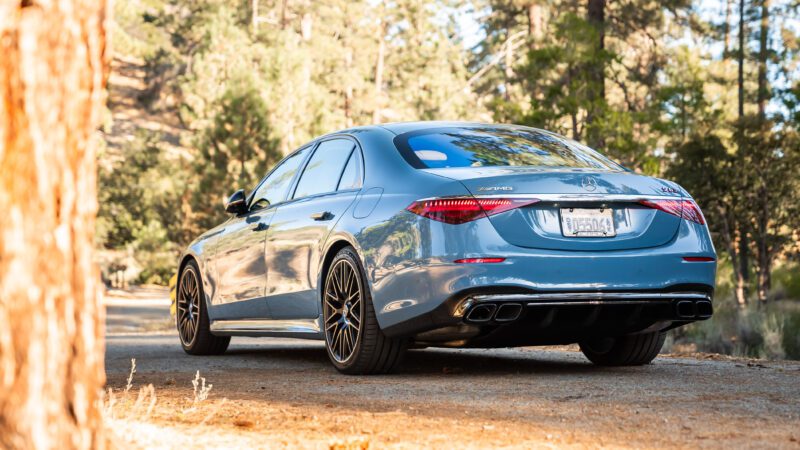
Despite its soft suspension and immense weight, the S63 has no trouble chasing down sports cars on a curvy back road. It remains more balanced than expected, with little body roll and neutral and predictable handling. That’s the magic of combining a firmed-up chassis with rear-axle steering, anti-roll bars, and a limited-slip diff. Paired with a quick steering system, its onboard tech goes along way to hiding this car’s true heft.
With rotors measuring 15.7 inches up front with 15s in the rear, the S63’s composite brakes are massive. They deliver strong and consistent performance, only fading under extreme circumstances. On the daily commute, however, they provide tremendous stopping power while remaining easy to modulate and silent in their execution.
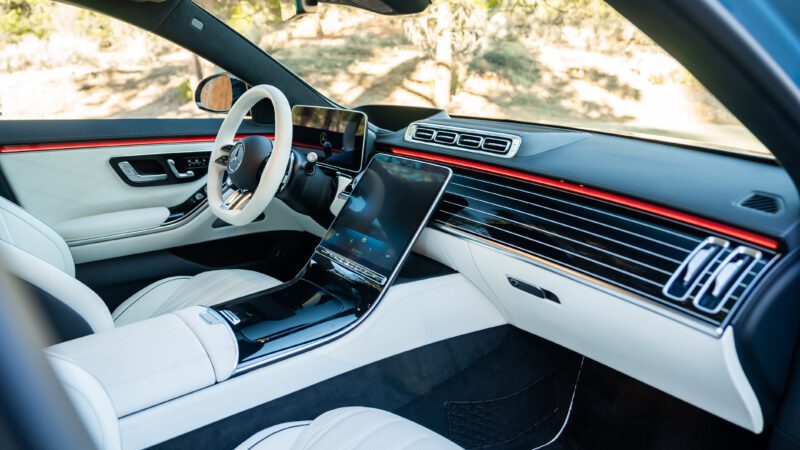
Aesthetically, the latest Mercedes-AMG S63 is more polarizing than its predecessor, thanks mainly to its use of a massive emblem up front and an even larger grille. Despite sporting similar proportions, the S63 that came before did a better job blending this car’s inherently sporty aesthetic with the subtle elegance you’d expect from an S-Class.
This tester’s $6,500 Signature China Blue finish is spectacular, pairing nicely with a two-tone white and black interior. A $1,300 option adding piano flowing-line trim introduces tasteful brightwork to this car’s cabin. Simultaneously, the $750 AMG Night Package contrasts this by darkening this sedan’s exterior trim, working nicely alongside the bright body color.
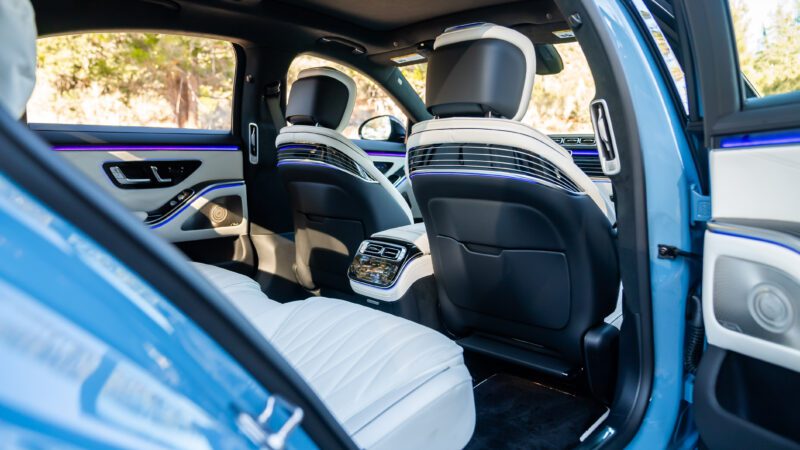
The most expensive option fitted to this car is the $10,500 Exclusive Interior Package by Manufaktur, the carmaker’s in-house customization arm. Given the S63’s elevated $183,400 base price ($209,900 as-tested), including a $1,150 destination fee, this interior upgrade is costly. Still, it’s necessary to unlock Manufaktur’s exclusive finishes, such as Nut Brown, Truffle Brown, Pastel Yellow, and this car’s Deep White, while increasing customization flexibility.
The latest Mercedes-AMG S63 E Performance might be a hybrid and the most powerful S-Class ever. However, what matters most is just how well it embodies the S63 spirit. It’s a performance sedan first and a hybrid second, which, thanks to the system’s excellent calibration, doesn’t detract from the driving experience while adorning it with the newfound flexibility of silent electric travel.
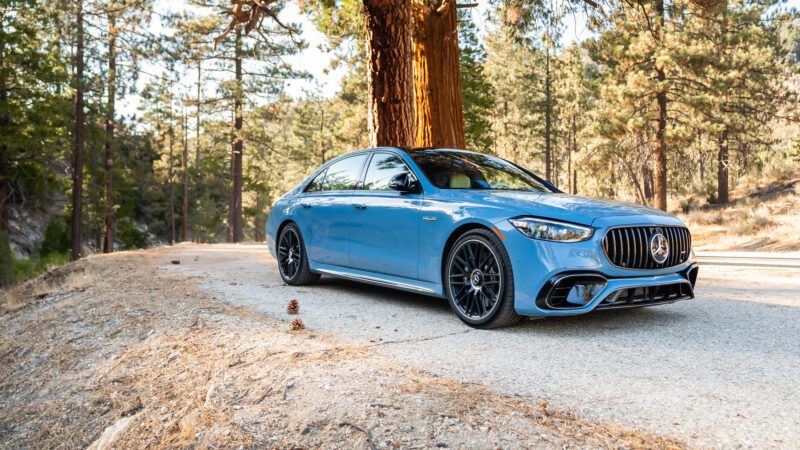
Unlike most technological advances that have come to define the S-Class, its use of a hybridized V8 comes mostly in response to tightening emissions regulations. Still, a drive in this latest flagship creates a sense that despite this, AMG applied the full weight of its engineering might to ensure that what is now the heaviest S63 ever can still deliver a driving experience as fun as it is authentic to the badge in the back.
Electrifying a model that’s iconic in the eyes of enthusiasts presents considerable risks. However, as the S63 proves, a plug-in hybrid powertrain only dilutes a car’s persona if a brand allows it to.
Tags: Featured



